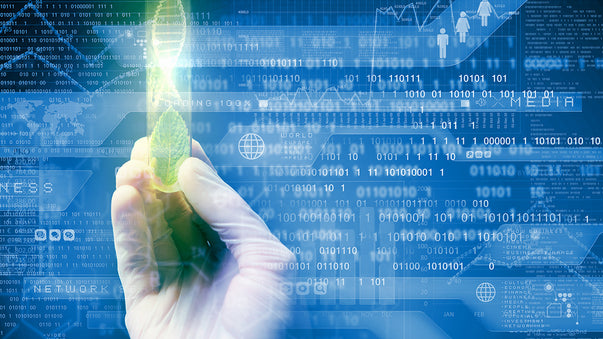From Hype to Hope

Welcome to this new issue of Pulse, your weekly newsletter focused on human enhancement today and tomorrow, brought to you by Thrivous!
We all wish to see fast, spectacular advances in life extension and human enhancement, and can fall for over-hyped and sensationalized news headlines. But in the real world things happen slower than that. In Pulse news summaries, I usually insert a caveat saying that you shouldn’t expect a “magic” result in the lab to become available to you overnight. It usually takes years or more.
Especially when it comes to matters related to health and survival, it’s important to keep readers soberly skeptical of over-hyped or exaggeratedly optimistic claims. This is what Gizmodo writer George Dvorsky has done, debunking the (probably overblown) claims of surgeon Sergio Canavero about the forthcoming first human head transplant and the possibility of soon reviving frozen human brains in new bodies.
Only, I think Dvorsky should have avoided using the expression “barking mad.” First, because (though I agree with Dvorsky that it’s extremely unlikely), there’s a (very) remote chance that Canavero could be right. Second, because personal insults have no place in a scientific discussion and often give a high moral ground to the opponent.
Some degree of hype is useful because it makes us feel good and hopeful. At the same time, it’s important to bear in mind that going from promising research results to practical use takes time. I don’t really hope I’ll live to see, say, wireless telepathic brain implants and over-the-counter cancer treatments that always work (not to mention mind uploading and indefinite life extension), but I feel happy for future generations. In the meantime, we can and should try and make the best of our life here and now, and feel good as part of the forward march of humanity.
China advances toward CRISPR/Cas9 genetic therapies for cancer. Chinese researchers at Nanjing University injected genes modified with the CRISPR/Cas9 gene editing technology into a cancer patient, the WSJ reports. This is the second test of CRISPR/Cas9, a technique that allows scientists to cut and paste DNA sections, on a human cancer patient in China. The test is part of a clinical study with 20 cancer patients. No similar human study has taken place in the US yet, but one is scheduled to start at the University of Pennsylvania later this year. CRISPR/Cas9, which is often hailed as the fast-coming Next Big Thing in medical biotech, could open the way to operational, systematic Lego-like genetic engineering. See also a Gizmodo story titled “China Is Racing Ahead of the US in the Quest to Cure Cancer With CRISPR.”
Google’s Calico is striving to conquer aging, but in stealth mode. Google has its own anti-aging bioscience company called Calico, but the company is following the stealth approach of many “moonshot” projects at Google, and isn’t usually forthcoming with details of its work. Google is committed to finding ways to treat aging as a disease, and according to Google Ventures’ Bill Maris, it is possible to live 500 years, but besides these generic statements not much more is known. An investigative journalism story published by Vox concludes that, four years after its launch, we still don’t know what Calico is doing.
Advances toward 3D bioprinting. Researchers at the University of Gothenburg have generated cartilage tissue by printing stem cells using a 3D bioprinter. Stem cells from a patient were first processed into pluripotent stem cells, then printed into a structure using a 3D bioprinter, and then treated with growth factors to form cartilage tissue. The research paper, published in Scientific Reports (open access), describes a procedure that enables the cells to survive printing and multiply, and a protocol that causes the cells to differentiate to form cartilage. While the possibility to 3D print organs is still far, this encouraging result could find preliminary applications to treat cartilage damage from osteoarthritis.
From Siri to AI-powered brain implants. Speaking at TED, Artificial Intelligence (AI) developer Tom Gruber, co-creator of Apple’s Siri, presented a vision of “humanistic AI.” Instead of competing with us, future AIs should augment and collaborate with us, for example by giving us total recall. "Instead of asking how smart we can make our machines, let's ask how smart our machines can make us,” said Gruber. The logical end-point of this process - AI-powered brain implants - is part of the vision behind Elon Musk’s Neuralink, and according to Musk it represents the best hope for human survival in the coming age of ultra-smart AIs.
Brain interfacing helps quadriplegic patient to move arm and hand. The emerging field of brain-computer interfacing (BCI), prominently featured in the last issue of Pulse, registers one more advance. Neuroscientists at Case Western Reserve University have restored arm and hands movements to a quadriplegic patient. The study, published in The Lancet, documents how a BCI with recording electrodes implanted under the patient’s skull, coupled to an electrical stimulation system able to activate the patient’s muscles, allowed the patient to move arm and hand by thinking. We are still a long way from the “magic” BCI technology envisaged by Elon Musk and Mark Zuckerberg, but slowly getting there.
Head transplant and frozen brain revival: not so fast. Cryonics fans may have noticed that, as reported by The Telegraph and other popular media, Italian surgeon Sergio Canavero claims that in three years he will be able to revive cryonics patients by thawing their brains without cellular damage, and transplanting the brains into healthy donor bodies. Canavero, who is no stranger to high-profile media stunts and claims he’s getting ready to perform the first human head transplant, said he plans to revive patients frozen at Alcor, the leading cryonics provider. Cryonics fans shouldn’t raise their hopes too much and too soon, though. Writing in Gizmodo, George Dvorsky debunks Canavero’s claims and reveals that Alcor, as well as the Cryonics Institute, deny having any contact with Canavero.
More Articles
Don't miss a beat! In our Pulse Newsletter, Thrivous curates the most important news on health science and human enhancement, so you can stay informed without wasting time on hype and trivia. It's part of the free Thrivous newsletter. Subscribe now to receive email about human enhancement, nootropics, and geroprotectors, as well as company news and deals.
Read more articles at Thrivous, the human enhancement company. You can browse recent articles in Thrivous Views. See other Pulse Newsletter articles. Or check out an article below.
-
In Memory of Hal Finney
Welcome to this new issue of Pulse, your weekly newsletter focused on human enhancement today and tomorrow, brought to you ...
-
#1 Best Nootropic Brain Supplement
You've heard about nootropics, the dietary supplements that improve focus, memory, and mood. And maybe you're wondering which nootropic product ...


